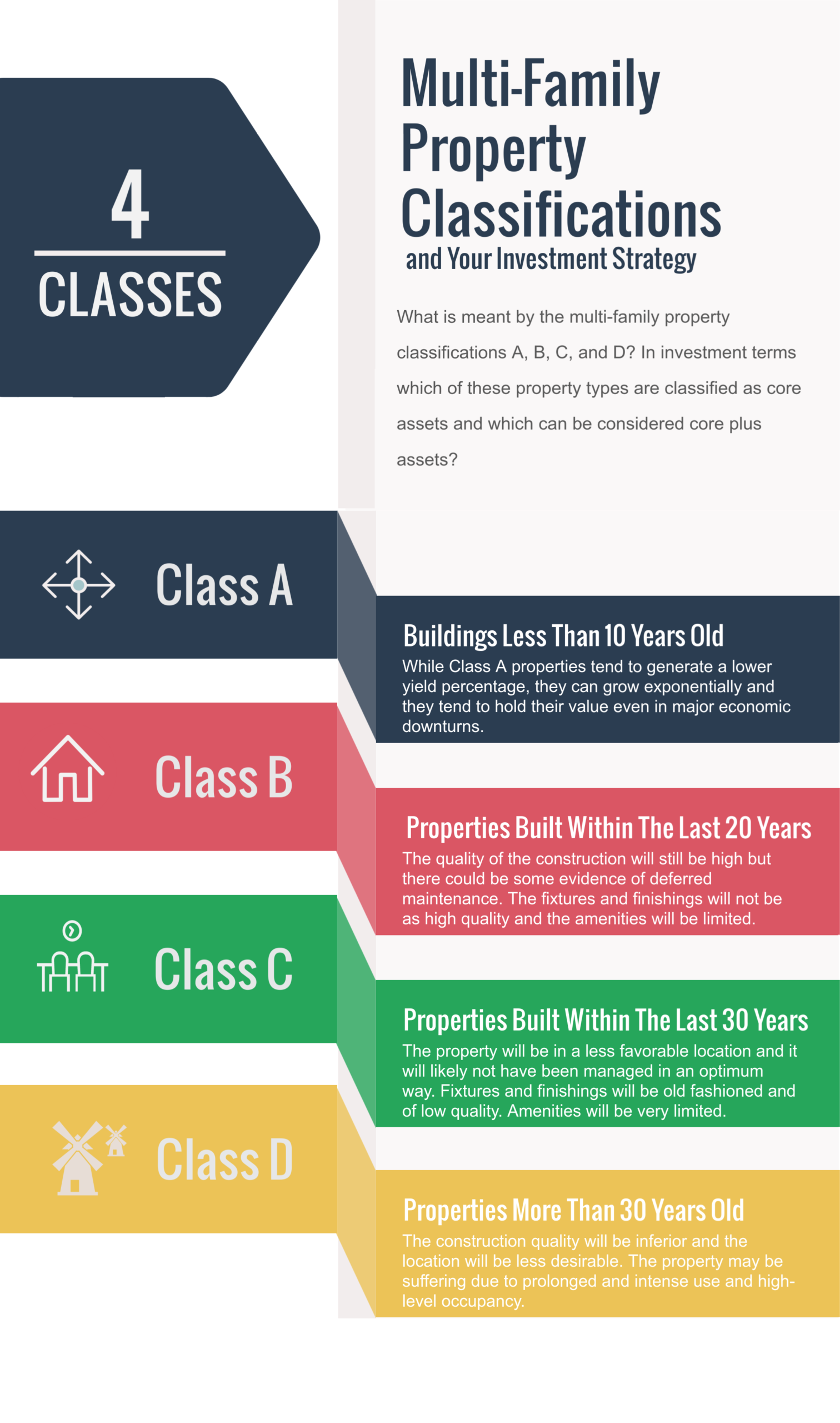Multi-Family Property Classifications and Your Investment Strategy
What is meant by the multi-family property classifications A, B, C, and D?
In investment terms which of these property types are classified as core assets and which can be considered core-plus assets?
If you are looking to pursue a conservative investment strategy or if you prefer a more aggressive one that has the potential to deliver a higher yield in which class of multi-family property should you be looking to invest?
All these questions and more will be clearly answered in this article.

Classification – Class A

Class A multi-family properties are buildings that are less than 10 years old. If they are more than 10 years old, they will have been extensively renovated.
The fixtures and fittings will be of the very best quality.
The amenities will be comprehensive and of a luxury standard.
While Class A properties tend to generate a lower yield percentage, they can grow exponentially and they tend to hold their value even in major economic downturns.
In terms of their investment profile, they are considered to be core assets.
An article on multi-family investing at millionairedoc.com explains why Class A apartment buildings, with a ‘core asset’ risk profile, offer a lower yield percentage:-
“Owners purchase these properties using lower leverage, therefore with lower risk. REITs and institutional investors purchase these assets for income stream. The lower risk profile results in lower returns in the 8-10% IRR range.”
A property in the Class A category would not likely have a “core plus” risk profile unless it were slightly downgraded in some way perhaps by a less favorable location, housing type or a number of other factors.
Classification – Class B

Class B properties are older than class A properties. Usually, class B properties have been built within the last 20 years.
The quality of the construction will still be high but there could be some evidence of deferred maintenance. The fixtures and finishings will not be as high quality and the amenities will be limited.
Classification– Class C

Class C properties are built within the last 30 years. They will definitely show some signs of deferred maintenance.
The property will be in a less favorable location and it will likely not have been managed in an optimum way.
Fixtures and finishings will be old fashioned and of low quality. Amenities will be very limited.
Both Class B and Class C properties can be candidates for a ‘value add’ investment strategy.
By bringing deferred maintenance issues up to date or by upgrading the property by means of an interior and/or exterior renovation there is an opportunity to increase the tenant occupancy and receive a higher return on your investment.
In his article, ‘what are the 4 investment strategies?’ Ian Ippolito explains why pursuing a value add investment strategy is a higher risk:- “Much of the risk in value-added strategies comes from the fact that they require moderate to high leverage to execute (40 to 70%). Leverage does increase the return, but also increases the risk, and makes the investment more susceptible to loss during a real estate cycle downturn.”
Classification – Class D
Class D properties are generally more than 30 years old. The property will be showing signs of disrepair and will be run down. The construction quality will be inferior and the location will be less desirable. The property may be suffering due to prolonged and intense use and high-level occupancy.
Both Class C and Class D properties can be candidates for an ‘opportunistic’ investment strategy.
Because these properties require major renovations they are the highest risk investments but they can also yield the highest returns.
Summary
In overall terms, the US multi-family real estate market continues to give excellent returns for well-informed investors.
This article has clearly explained how different types of multi-family properties are classified. The article has also given an overview of how each class of property fits the different types of investment profiles. We trust that this information will assist you in assessing your multi-family real estate investment goals.
For further assistance please connect with our team.
